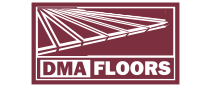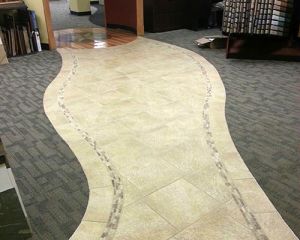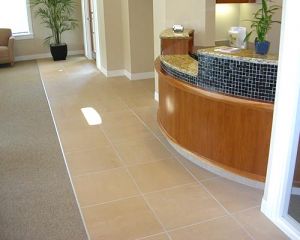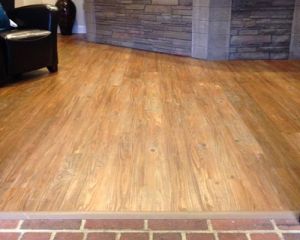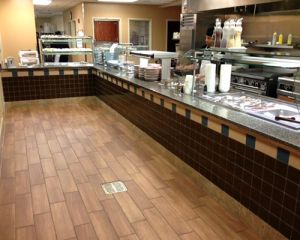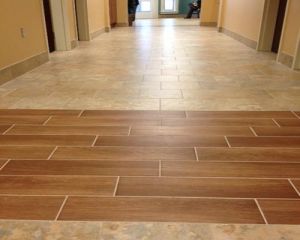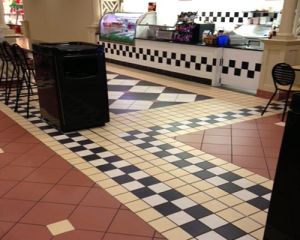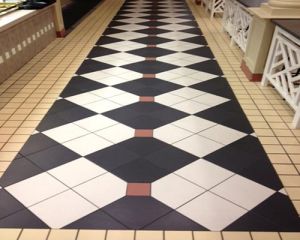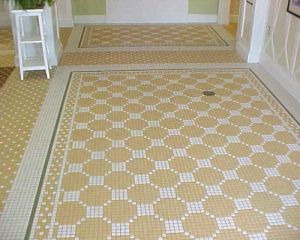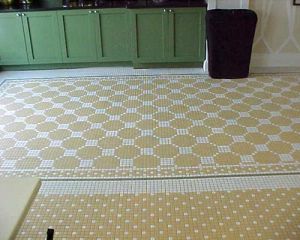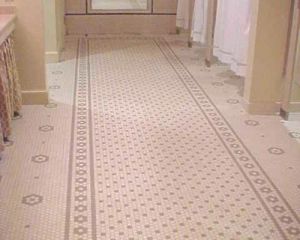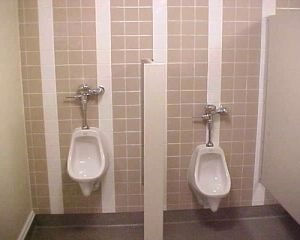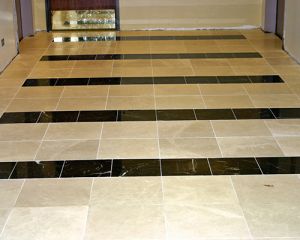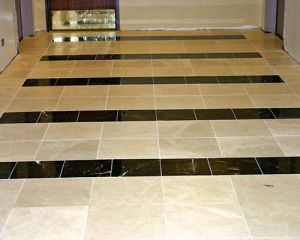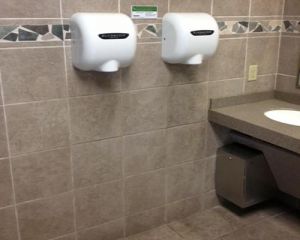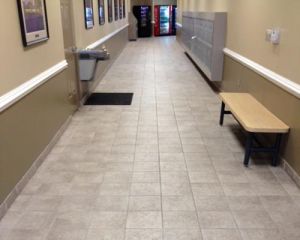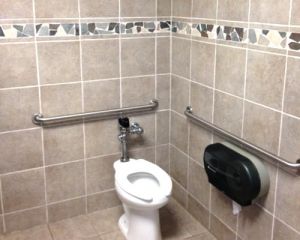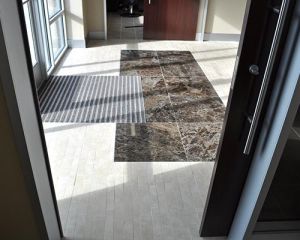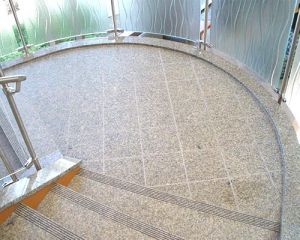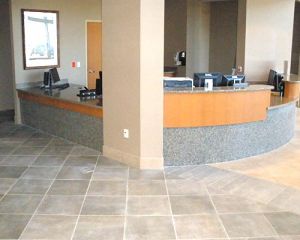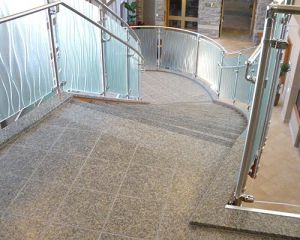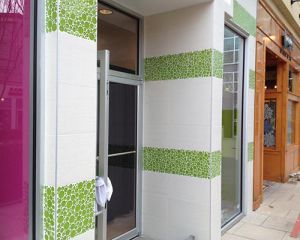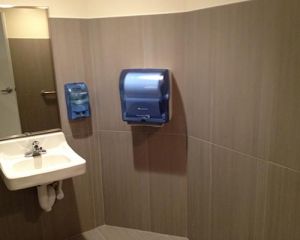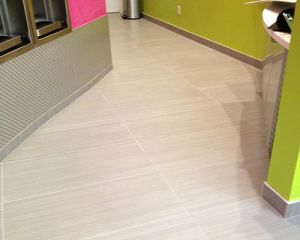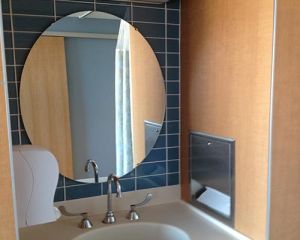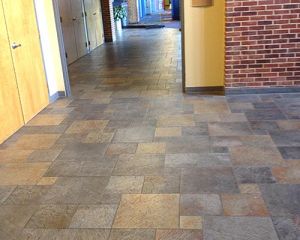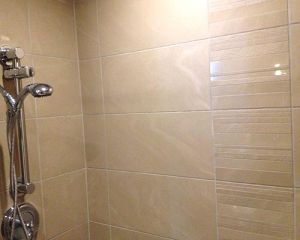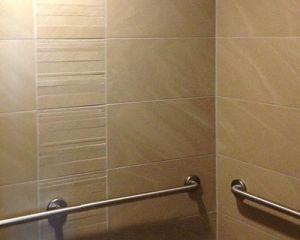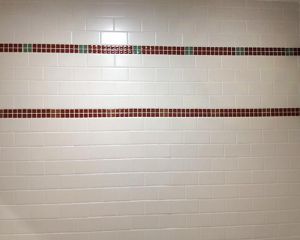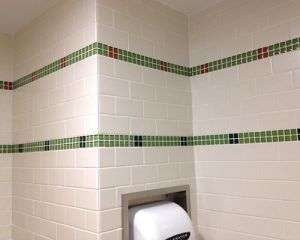Specifying and Understanding your Substrate
- Wood - When planning a tile installation over a wood sub floor, it is vital to ensure that you have a stable sub floor with limited deflection between joists to prevent broken tiles, cracking grout and tile bond failure. The Tile Council of North America (TCNA) has several systems for installation over wood (most commercial applications require 16” on center joists.) Wood sub floors should consist of a minimum 19/32” layer of exterior grade plywood overlaid with 15/32” exterior grade plywood without overlapping joints (total thickness of 1 1/8”.)
- Concrete - A concrete sub floor should be as flat as possible (see table below) and provide the least amount of deflection as possible. Some lightweight mixes and certain patching materials may also not be appropriate for tile installation (refer to manufacturers published limitations.) New concrete should be wet cured using blankets or plastic sheeting for a minimum of 7 days and allowed to cure for no less than 28 days prior to installation. Light steel trowelling or a light broom finish will provide the best surface profile for bonding. Membrane forming curing agents should be avoided as they will need to be removed for tile installation. Any previous coatings or glues that could affect bonding need to be removed.
- Floor Flatness - Floor flatness has typically been specified using the “straight edge” method (i.e. ¼” in 10’) but this method does not address the frequency of the variance. We suggest floor flatness measurements using ASTM E1155 and ACI 302. This method addresses roll frequency. We have included straight edge numbers (in parentheses) as a reference point only for visualization.
Floor Flatness Requirements (ASTM E1155-06, ACI 117-06, ANSI 108.1B-99) Tile Size Grout Joint Size +/- 1/2" 1/4" or larger 3/16” 1/8” 8”x8” FF25 (1/4” in 10’) FF32 (3/16” in 10’) FF50 (1/8” in 10’) 12”x12” FF25 (1/4” in 10’) FF32 (3/16” in 10’) FF50 (1/8” in 10’) 16”x16” FF25 (1/4” in 10’) FF32 (3/16” in 10’) FF50 (1/8” in 10’) 18”x18” FF32 (3/16” in 10’) FF50 (1/8” in 10’) FF60 (3/32” in 10’) 24”x24” FF32 (3/16” in 10’) FF50 (1/8” in 10’) FF60 (3/32” in 10’) 36”x36” FF50 (1/8” in 10’) FF60 (3/32” in 10’) FF60 (3/32” in 10’) - Lippage - Lippage is the condition where the edge of a tile is higher than that of an adjacent tile. This is often unavoidable with natural stone and large format tiles. Industry standards for smooth finish natural stone tiles limit lippage to 1/32”. Perception of lippage can be affected by lighting angle, spacing, allowable warpage of tiles, or reflectivity of tiles. Below is a table for identifying acceptable lippage per ANSI A137.1
Tile Type Tile Size (in.) Joint Width Lippage (in.) Glazed Wall/Mosaic 1x1 to 6x6 1/16 to 1/8 1/32 Quarry 6x6 to 8x8 1/4 or greater 1/16 Pressed Floor and Porcelain All 1/16 to less than 1/4 1/32 Pressed Floor and Porcelain All 1/4 or greater 1/16
